On board the world’s most travelled superyacht
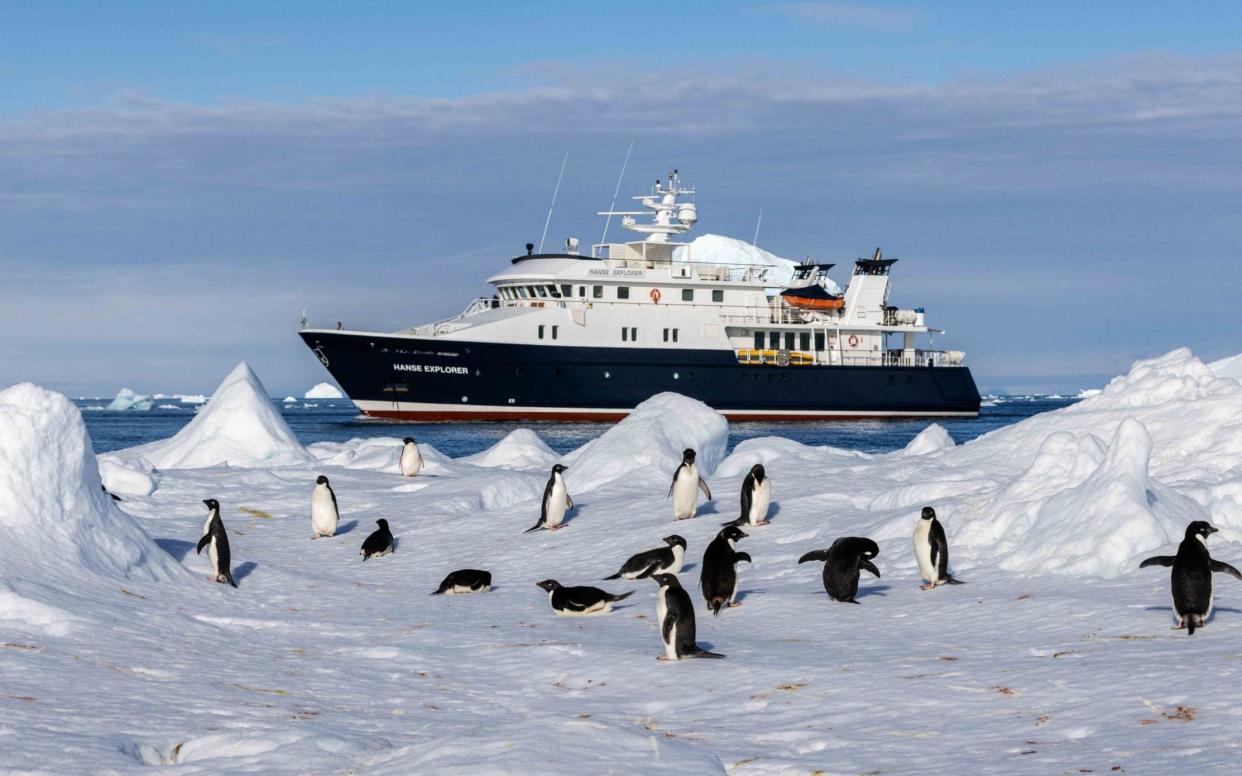
“Humpbacks off the bow – all guests to the bridge,” a voice sang over the intercom at 7am on the first morning of our expedition. Blinking away sleep, I rushed onto the deck in my dressing gown and a brilliant-white glare filled my eyes through panoramic windows. Metres in front of our yacht, a pod of four humpback whales were feasting on krill, surrounded by giant icebergs, the Antarctic Peninsula looming on the horizon. Close encounters such as this would quickly become the norm during my week onboard Hanse Explorer, a purpose-built expedition yacht, which took us off the beaten cruise track in Antarctica.
Most visitors to the White Continent travel on board a cruise ship, but a lucky few explore on private superyachts. Hanse Explorer is one such vessel. Built in 2006 by German shipping magnate Peter Harren and now owned by Swiss explorer Sven-Olof Lindblad, the 48-metre yacht is the most travelled charter superyacht on the planet.
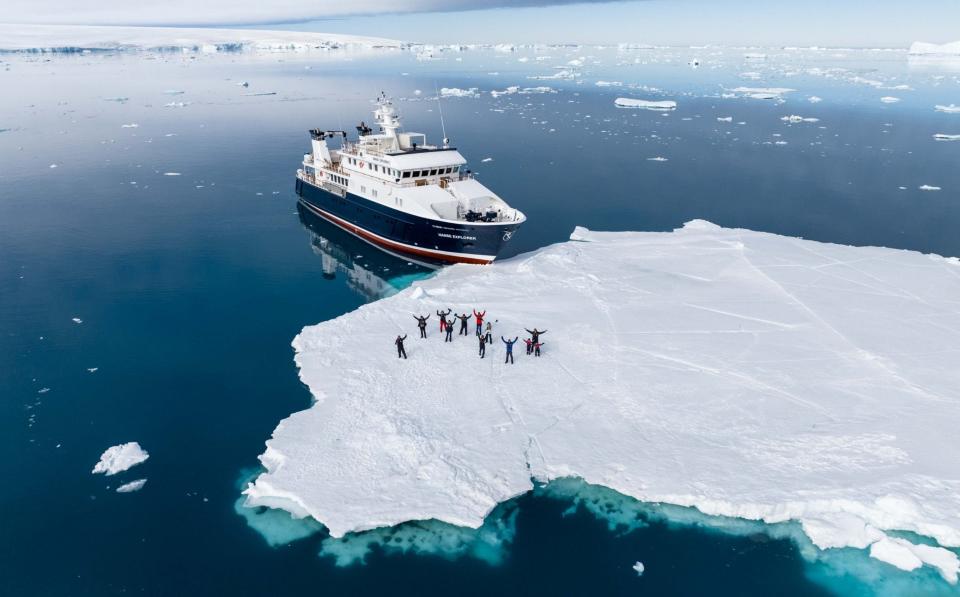
In 2023 she clocked up a staggering 35,397 nautical miles, many of which were racked up during charters for the rich and famous (our maps below show exactly where it went last year). “The clients we get are very successful people – some of the most successful in the world in whatever they do,” Captain Andriy Bratash told me. Previous guests include leaders of industry, royalty and film stars.
Hanse Explorer sleeps just 12 guests and up to 20 crew and offers the comfort of a luxury hotel with the personalised service and flexibility of a private yacht. For guests, the exclusive experience begins before boarding. While cruise ships must spend two days crossing the treacherous Drake Passage to reach Antarctica, we took what’s been dubbed the “penguin plane”. The two-hour flight from Punta Arenas in Chile to King George Island on the tip of the Antarctic Peninsula has no set schedule and flies only if there’s a suitable weather window, landing on a short gravel runway; a hair-raising experience.
Superyacht vs cruise ship
Trips on board Hanse Explorer are managed by EYOS Expeditions, a pioneer of chartering in Antarctica. The voice that had woken me from my slumber the first morning belonged to eagle-eyed EYOS expedition leader Richard White, a younger David Attenborough type who first visited the region as a researcher in 1998. Together with Captain Bratash, White led a week-long journey that was dictated by the weather and wildlife rather than an itinerary.
“We don’t try to go as far as fast as cruise ships, and we do it in a different style,” White said. “We have a lot more spontaneity in what we do because we have the ability to say, ‘there’s something cool over there, let’s go in that direction’. We try to go to places that are less trafficked, and we work hard on maintaining aspects of wilderness, which some of the other vessels have lost.”
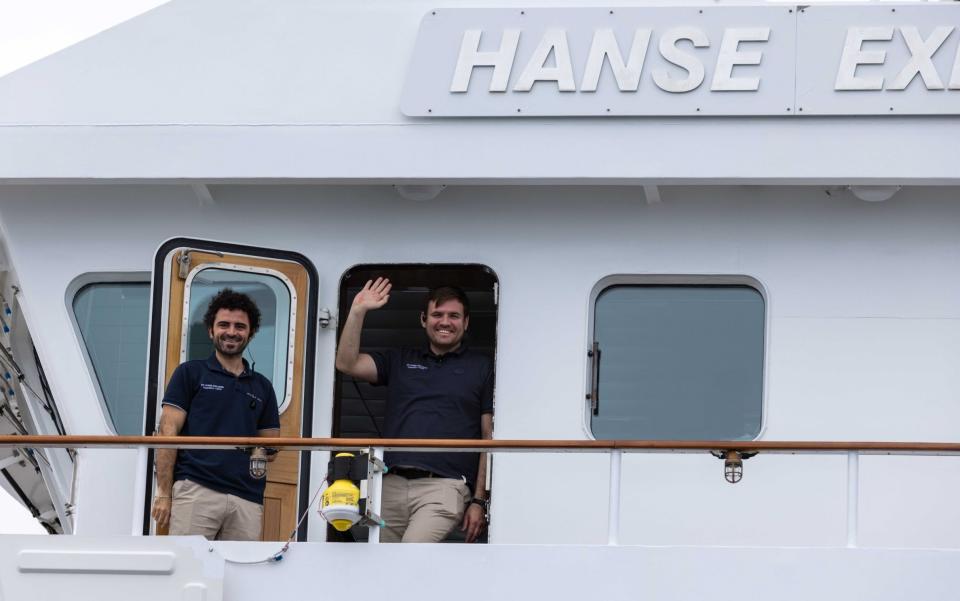
The flexibility meant our zodiac trips and shore landings were frequent and often spontaneous – within 10 minutes of White spotting something interesting, we’d be kitted up and on the water. This is just one of the ways a private yacht experience surpasses that of a cruise ship. Antarctic regulations permit a maximum of 100 people on a landing point at one time, so ships carrying several hundred passengers must stop for a lengthy period to facilitate visits for all. With only 12 guests, we were able to travel freely and “stop and smell the whales’ breath”, as White liked to say.
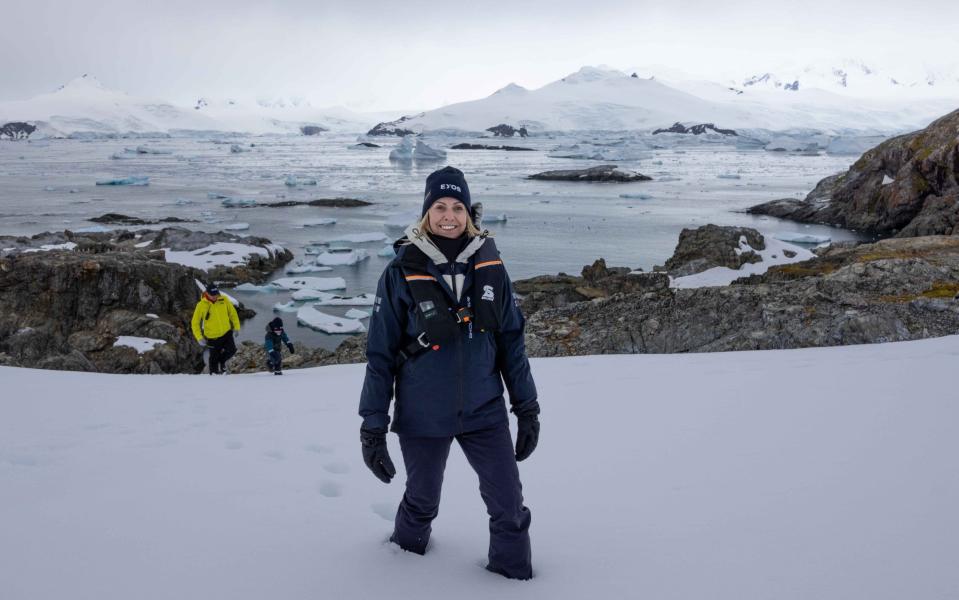
What they don’t tell you on television
While sailing, we felt truly alone. In one week, I counted on one hand the number of other vessels we passed. We spent the week journeying up and down the Antarctic Peninsula and discovered things they don’t tell you about on television: the sheer stench of a penguin colony; the gunshot-esque cracks of mini avalanches. We watched adelie and gentoo penguins waddle up “penguin highways” to search for their chicks among colonies of thousands. We saw seals lazing on beaches and fighting with peers – “seals are solitary mammals”, warned one fellow explorer, who bore the scars of getting too close to one.
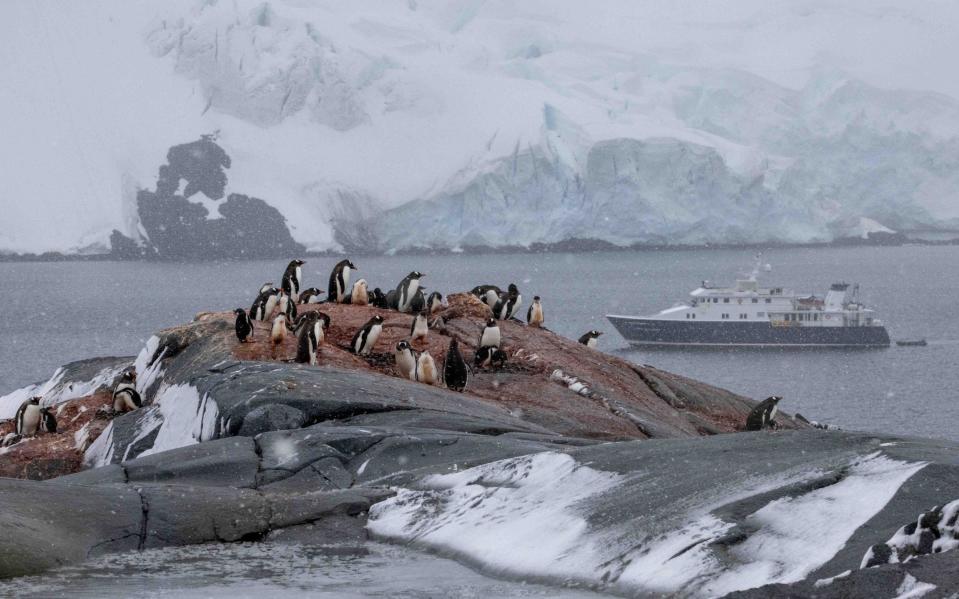
We passed through the narrow Errera Channel at sunset with humpbacks off the bow and chased the sun to Wilhelmina Bay where we tried out ocean kayaking. Following the weather one day, we diverted from our original plan for a landing at picturesque Neko Harbour. “If you hear my tsunami warning, run up the hill,” White said as we hiked past a gentoo colony to a viewpoint. On one particularly memorable Zodiac trip, an inquisitive humpback dived underneath our vessel, turning to flash us her white belly as we bobbed in stunned silence.
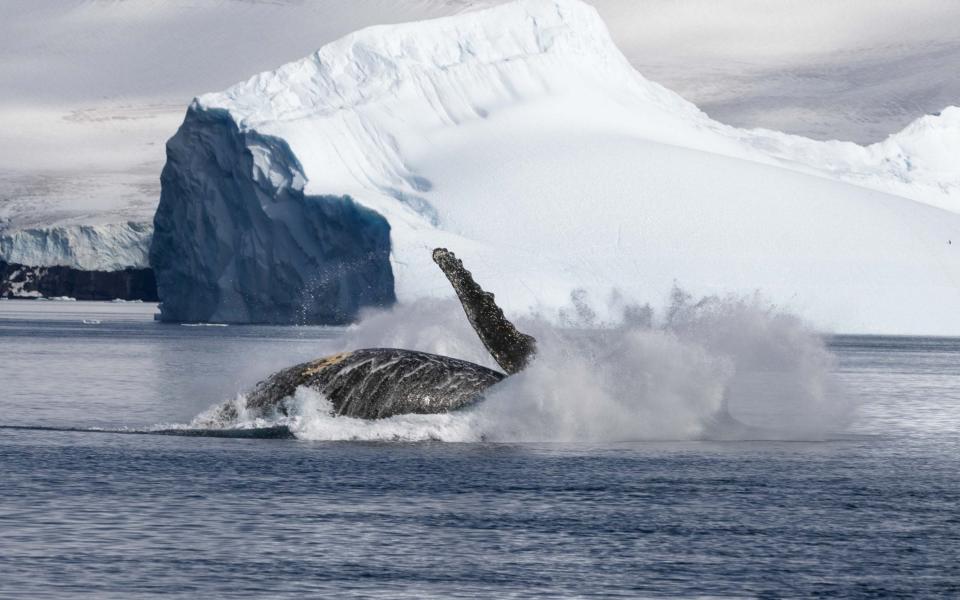
Made for extremes
Hanse Explorer isn’t your usual private superyacht, most of which are built for the kinder climates of the Mediterranean or Caribbean. She’s purpose-built for traversing the most unforgiving climates and conditions. “We think of her as a small passenger ship because we’re solidly built from steel, we have ice class and we have commercial equipment that’s oversized for safety,” Captain Bratash said. The yacht’s strength was demonstrated when the captain deliberately steered into a small iceberg, cracking the ice.
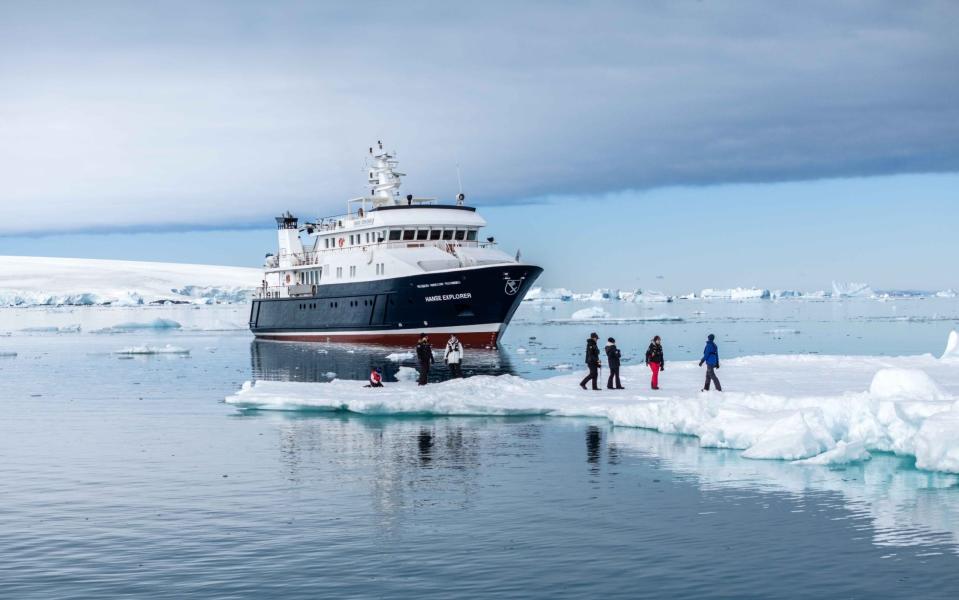
What the yacht has in terms of resilience, she mirrors in comfort. It’s an intimate experience with just six guest rooms – three doubles, two twins and one master with a private terrace – which have all the comforts you’d expect.
Communal areas offer large windows for watching the passing scenery. The main deck has a dining room, a terrace and a lounge where White gave daily debriefs and talks on topical issues such as climate change. The lower deck features a gym, a sauna with portholes and an equipment room where guests store outdoor kit, while the upper deck has an al-fresco lounge and a hot tub on the bow – a scenic spot for sundowners.
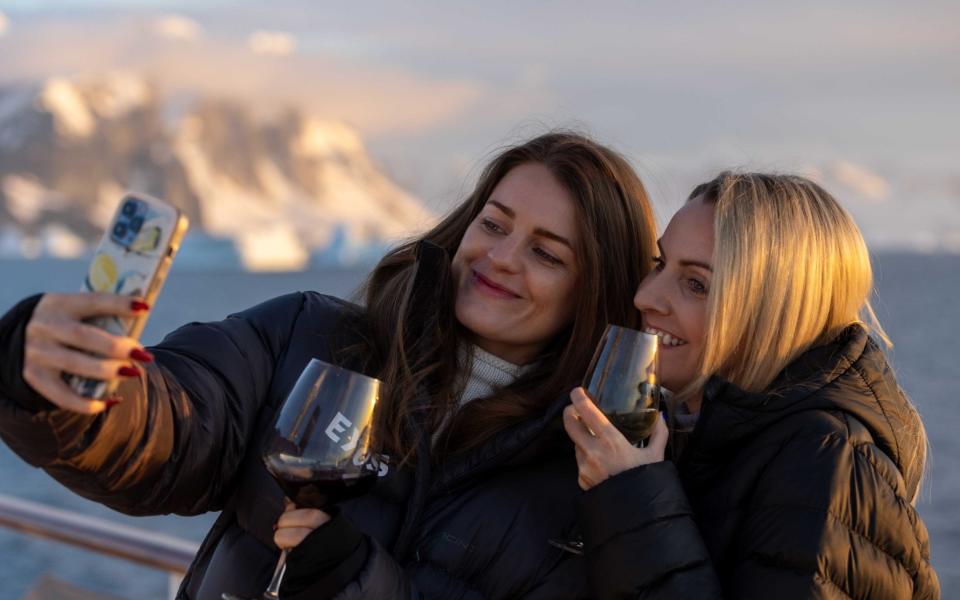
A polar plunge
Life onboard Hanse Explorer was relaxed and efficient. The crew moved like shadows – always present but rarely seen. Pop out for a breakfast and your room would be cleaned before your return; your fresh laundry folded neatly on the bed. Come back from an excursion and the sauna would be heated and freshly baked cakes and hot chocolate with Baileys would be waiting in the lounge.
Meals were taken communally around a large dining table that was creatively decorated every day with themes ranging from Polynesia to pirates. Every day we enjoyed hearty buffet breakfasts, family-style lunches and four-course dinners.
The ambience was relaxed; within a day, guests were lounging in their thermals. “We provide the superyacht level of service, but we aim to create an atmosphere of home onboard, so guests are totally comfortable,” said Captain Bratash, from Ukraine, who’s been at the yacht’s helm since 2016.
Between excursions, the enthusiastic crew organised experiences such as kayaking and the “polar plunge”. As a fair-weather swimmer, I was apprehensive about entering the freezing water in just a swimsuit but, spurred on by the cheers of my peers, I jumped. The shock was quickly replaced by an adrenaline rush so intense that I plunged again the next day.
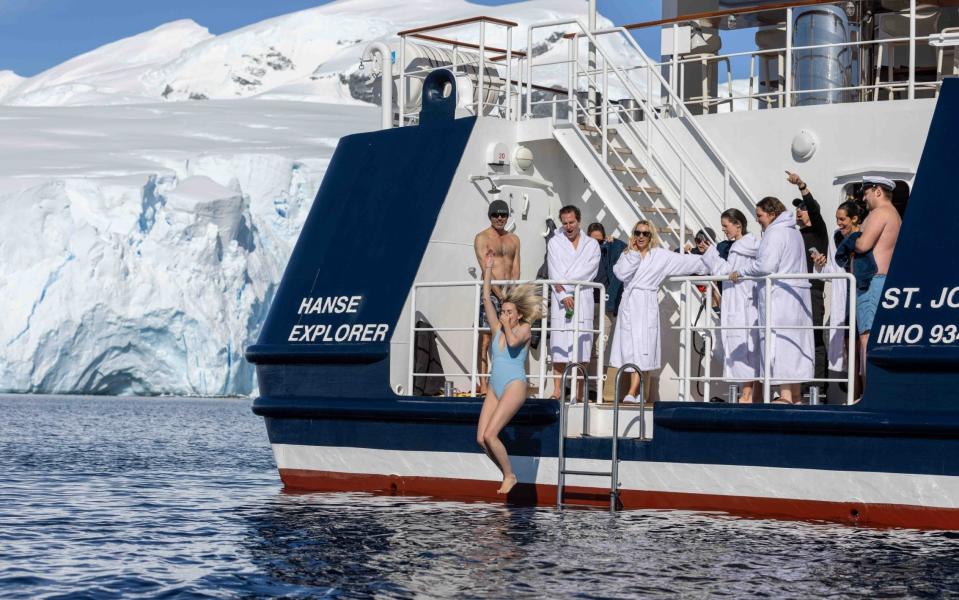
On our final day, White took us to a remote bay and suggested we take a moment to reflect. The snow sparkled in the sun and icebergs bobbed in the shallows as penguins played on top of them. The only sounds were the call of a skua overhead and the chirp of a delighted chick reuniting with its parent, back from sea with a belly full of krill. I felt a deep connection with nature – and it clicked. Why do people travel across the globe and spend six-figure sums for this experience? Total freedom. As it turns out, this is something that money can buy – you just need a private yacht to get there.
How to do it
Charter trips on board Hanse Explorer are managed by EYOS Expeditions, which hosted Rachel Ingram. The yacht will spend the Northern Hemisphere summer in the Pacific before travelling to Papua New Guinea and then back to Antarctica. For more information or to book, contact EYOS Expeditions (eyos-expeditions.com; 001 801 390 7025) or contact info@eyos.com. Prices start from $70,000 (£56,6000) per week for a book-by-cabin charter or from $245,000 (£197,600) plus 35 per cent expenses for a full private charter. Flights are extra.
Where the world’s most travelled superyachts went in 2023
Last year, BOATPro’s Global Fleet Tracker followed the journeys of almost 7,000 superyachts, with a cumulative 18.7 million nautical miles recorded between them. These were the four most travelled:
Hanse Explorer
This 48-metre superyacht began the year in Antarctica, before heading to the Caribbean via the Falkland Islands. The Northern Hemisphere summer was spent exploring Scandinavia and the Arctic, before the long journey back to the White Continent.
Gene Chaser
Owned by DNA sequencing scientist Dr Jonathan Rothberg, Gene Chaser completed a full circumnavigation in 2023, with stops in the Galapagos, Tokyo, Bali, Rhodes and Madeira, among others.
Australia
This 56-metre yacht, on the charter market, began the year in the Med, visited London, and then embarked on a meandering journey to its namesake country via Bergen, Copenhagen, Hamburg, the Suez Canal and Singapore.
Tecla
What could be better than a year spent exploring the Pacific? That – along with a traverse of the Northwest Passage – was the main focal point for Tecla, a sailing ketch built in 1915, refitted in 1989, and currently in private hands.

